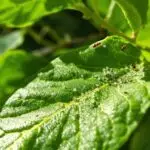Flupyradifurone is a stable compound with moderate water solubility and a melting point of 69 °C. Its degradation processes are influenced by environmental conditions, including rapid breakdown under UV light. You’ll notice its DT50 values range from 33 to 374 days, while metabolites may persist even longer in soil. Flupyradifurone poses risks to aquatic invertebrates and beneficial insects, raising concerns about its environmental impact. Regulatory measures are in place to monitor its use. Understanding these factors is essential for effective management strategies. There’s much more to uncover about its effects and regulatory status in various regions.
Key Insights
- Flupyradifurone has a DT50 range of 33 to 374 days, indicating its persistence in the environment.
- Hydrolysis contributes minimally to flupyradifurone degradation, with half-lives exceeding 150 days in water.
- Rapid photolysis occurs under UV light, with degradation half-lives between 2.37 to 3.81 minutes.
- Microbial biodegradation varies, producing metabolites like difluoroacetic acid that may degrade more slowly than the parent compound.
- Field studies show diminishing flupyradifurone levels over time, necessitating ongoing monitoring for environmental impacts.
Chemical Properties of Flupyradifurone

What makes Flupyradifurone an interesting compound in environmental studies? You might find its unique physical and chemical properties quite engaging.
With a molecular formula of C12H11ClF2N2O2 and a molar mass of 288.68 g/mol, it appears as a white to beige solid that lacks any discernible odor. Its melting point sits at 69 °C, making it stable under various environmental conditions.
When it comes to solubility, Flupyradifurone shows a moderate solubility in water at 3.2 g/L, which can influence its behavior in ecosystems. Its log Pow of 1.2 suggests a balance between hydrophilicity and lipophilicity, allowing it to interact with both aqueous and lipid environments.
One of the standout features is its stability; it doesn’t dissociate across a broad pH range and remains stable to hydrolysis, indicating a low likelihood of breaking down quickly in natural waters. Additionally, its high uptake rate by plants and the ability to be monitored via phosphor imaging analysis underscores its effectiveness in agricultural applications.
Moreover, its structural resemblance to the natural insecticide stemofoline allows for intriguing discussions about its ecological role. As an agonist of insect nicotinic acetylcholine receptors, it operates in a way that can impact insect populations.
Understanding these chemical properties not only enriches your knowledge but also ties you to a community that’s committed to studying the implications of such compounds in our environment.
Environmental Spread of Flupyradifurone
When you consider the environmental spread of flupyradifurone, it’s essential to examine how it can contaminate water environments through processes like surface runoff and spray drift.
You’ll find that this compound breaks down in water primarily through sunlight, creating transformation products that could affect aquatic life. Additionally, the high persistence half-life of flupyradifurone suggests that its effects may linger in the environment longer than anticipated.
Understanding these degradation pathways helps assess the potential risks associated with flupyradifurone in our ecosystems.
Water Environment Contamination
Flupyradifurone’s high water solubility and mobility make it a significant concern for water environment contamination. With a solubility of 3200 mg/L, it’s easy for flupyradifurone to seep into our water bodies. Its ability to move through soil via run-off, erosion, and spray drift means that even a small application can have widespread effects. Once in surface water, flupyradifurone can persist for long periods, posing risks to aquatic life, while also having the potential to leach into groundwater.
Recent studies have shown that direct photolysis is the main degradation pathway for flupyradifurone in water, further complicating its environmental impact. You should be aware that flupyradifurone is highly toxic to aquatic organisms, which raises alarms about its impact on our ecosystem. Surface water concentrations may exceed critical toxicity levels, affecting not just fish but also other non-target species.
While label mitigations like buffer zones are in place to help protect these organisms, they can’t completely eliminate the risks. As a community, we must stay informed about these issues and advocate for responsible use of such chemicals. Understanding the pathways of contamination can empower you to make better choices for the environment we all share.
Together, we can work toward a healthier water ecosystem.
Degradation Pathways Identified
Understanding the degradation pathways of flupyradifurone is vital for evaluating its environmental impact. You’ll find that flupyradifurone is stable in water, showing hydrolysis half-lives exceeding 150 days at varying temperatures.
However, when exposed to ultraviolet (UV) light, it degrades rapidly, with half-lives ranging from just 2.37 to 3.81 minutes. This rapid breakdown primarily occurs through direct photolysis, making it essential to take into account light exposure in water environments.
You should also be aware of the transformation products formed during degradation. The cleavage of the difluoroethyl group and the pyridinylmethyl bridge leads to metabolites like difluoroacetic acid.
While flupyradifurone is mobile and can leach into groundwater, it remains persistent in the environment for months after application. Its moderate mobility, coupled with high water solubility, facilitates its spread. Recent studies have highlighted that flupyradifurone exhibits high soil persistency, forming significant proportions of its metabolite, difluoroacetic acid, in the soil.
In agricultural settings, the metabolism of flupyradifurone in crops results in various degradation products, but you’ll notice that some metabolites degrade more slowly than the original compound.
Being informed about these pathways helps us understand the potential risks and allows us to make responsible decisions regarding its use and management.
Degradation Processes

Degradation processes for flupyradifurone in aquatic environments play an essential role in determining its environmental impact.
You’ll find that hydrolysis, while it occurs, doesn’t greatly contribute to flupyradifurone’s breakdown in water. The compound shows stability, with long half-lives indicating minimal degradation through this pathway. So, it’s not a major concern regarding hydrolytic degradation.
On the other hand, photolysis is where things get interesting. Flupyradifurone breaks down quickly when exposed to sunlight or UV light, making this a notable degradation pathway in aquatic settings. If you add a photocatalyst like TiO2, the breakdown speeds up even more. This process leads to the formation of transformation products, such as BYI 02960-succinamide, which can also impact aquatic life.
Biodegradation is another important aspect to evaluate. Microorganisms in the water actively break down flupyradifurone, and their efficiency can vary based on factors like temperature and overall microbial activity. Reliable analytical methods are crucial for monitoring pesticide residues during these biodegradation processes.
Through aerobic processes, they produce metabolites like difluoroacetic acid (DFA) and 6-chloronicotinic acid (6-CNA), which help reduce flupyradifurone residues in the environment.
While flupyradifurone can enter water bodies and mix readily, the potential risk to aquatic organisms appears low.
With the predicted environmental concentrations, residues aren’t expected to accumulate in fish tissues, reassuring you about the security of these ecosystems.
Understanding these processes helps us all feel connected to a healthier environment.
Soil Metabolites and Persistence
In soil, flupyradifurone undergoes significant degradation under aerobic conditions, leading to the formation of remarkable metabolites. Two primary metabolites you should be aware of are difluoroacetic acid and 6-chloronicotinic acid. The degradation process involves the cleavage of the difluoroethyl group, which produces difluoroacetic acid, and the breakdown at the pyridinylmethyl bridge, resulting in 6-chloronicotinic acid.
Difluoroacetic acid tends to be more persistent, with DT50 values ranging from 32 to 74 days and DT90 values extending from 149 to 245 days. In contrast, 6-chloronicotinic acid breaks down much faster, displaying DT50 values between 2.9 and 5.3 days.
While flupyradifurone itself can linger in the soil—showing DT50 values from 33 to 374 days and DT90 values exceeding 1,000 days—its metabolites exhibit varying levels of persistence. This persistence raises concerns regarding the potential for groundwater contamination due to the high leachability of flupyradifurone.
Field studies consistently show that both flupyradifurone and its metabolites diminish over time, aligning with laboratory results. Remarkably, difluoroacetic acid emerges as a significant residue, especially in rotational crops.
The analytical techniques employed, such as LC/MS/MS, guarantee accurate detection of flupyradifurone and its metabolites, enhancing our understanding of their behavior in the environment. By grasping these dynamics, you’ll appreciate the importance of monitoring these substances in agricultural practices and their implications for soil health.
Ecotoxicological Impacts

Flupyradifurone poses significant ecotoxicological risks, particularly to aquatic life, pollinators, and non-target terrestrial species. Its high toxicity to aquatic invertebrates raises alarms about surface water contamination, where concentrations could exceed toxicity benchmarks. You might feel a sinking feeling knowing that these chemicals can persist in water, endangering delicate ecosystems. Similarly, while flupyradifurone is highly toxic to adult honey bees, it shows little acute risk to their larvae. Yet, chronic exposure may push bees to forage too early, threatening their survival. Recent studies indicate that the hazardous concentration of flupyradifurone is 37 times higher than that of imidacloprid, underscoring the potential severity of its effects on aquatic organisms.
Here’s a closer look at the impacts:
| Species Affected | Type of Impact | Notes |
|---|---|---|
| Aquatic Invertebrates | High toxicity | Risks of contamination and persistence |
| Adult Honey Bees | Highly toxic | Acute oral exposure concerns |
| Larval Honey Bees | Practically nontoxic | Low acute risk but chronic effects exist |
| Beneficial Insects | Negative effects on survival | Particularly on species like lady beetles |
| Terrestrial Invertebrates | Potential risks | Similar to those observed in honey bees |
The mobility of flupyradifurone’s degradates adds to the worry, as they can leach into groundwater, affecting our beloved terrestrial species. You’re not alone in wanting to protect our environment; understanding these impacts is the first step toward responsible use and stewardship. Together, we can aim for a healthier ecosystem for all.
Regulatory Status Overview
How do regulations shape the use of flupyradifurone in agriculture? Understanding the regulatory landscape is vital for anyone involved in agricultural practices. Flupyradifurone has gained approval across several regions, including the EU, Canada, and the USA. In the EU, it was first approved in 2015, but concerns about its impact on wild bee species prompted restrictions on its use.
Similarly, Health Canada granted full registration, while the EPA in the USA registered it shortly thereafter, allowing for its application on major crops.
However, you should be aware of the limitations that come with these approvals. For instance, in the EU, application is restricted to agricultural crops, with measures in place to prevent drift to residential areas and protect endangered species. The PMRA in Canada emphasizes a target margin of exposure for occupational security, and in Minnesota, you can use flupyradifurone on various crops, though specific conditions apply. Additionally, recent assessments have highlighted the sensitivity of Megachile rotundata to flupyradifurone, indicating a need for careful management in its application.
Looking ahead, ongoing monitoring and potential future restrictions could influence how you utilize this product. Regulatory agencies are committed to evaluating new information regularly, ensuring that you stay informed about any changes that might affect your practices.
Engaging in public consultations can help you voice your concerns and stay connected with the community. Ultimately, these regulations aim to balance agricultural needs with environmental protection, making it essential for you to stay aware and compliant.
Human Health Considerations

Understanding the regulatory framework surrounding flupyradifurone also leads to important considerations regarding human health. You’ll be relieved to know that flupyradifurone is neither genotoxic nor carcinogenic, which means it doesn’t alter DNA or cause cancer. However, high doses have shown some effects on clinical chemistry parameters, such as bilirubin and glucose levels. While neurotoxic signs appeared at elevated doses, these weren’t observed in typical dietary studies. When it comes to dietary risks, rest assured that flupyradifurone poses minimal concern. For instance, children aged 1 to 2 years, who represent the highest exposed subgroup, are expected to ingest less than 31% of the acceptable daily intake. Furthermore, the refined acute dietary intake for these young ones is under 26% of the acute reference dose. This means that exposure from food and drinking water is well below levels that trigger adverse effects. In terms of exposure and distribution, the highest concentrations of flupyradifurone were found in blood, gastrointestinal tract, and eyes shortly after dosing, but these levels decreased rapidly. Most radioactivity was detected in urine and the carcass, showing that your body clears it efficiently. Notably, sublethal effects on non-target species from flupyradifurone highlight the importance of thorough risk assessments.
Biodiversity Effects
Exploring the implications of flupyradifurone on biodiversity reveals significant concerns for various ecosystems. The effects on aquatic life and pollinators are particularly alarming. Flupyradifurone is highly toxic to aquatic invertebrates, with potential surface water concentrations exceeding protection benchmarks. Its mobility allows it to easily enter waterways through runoff, posing long-term risks to aquatic ecosystems. Additionally, risk assessments often fail to account for the sublethal effects of flupyradifurone on non-target species, leading to an underestimation of its ecological impacts.
When it comes to pollinators, flupyradifurone demonstrates a complex impact. While it’s practically non-toxic to bees upon contact, it can severely affect them when ingested, impairing their motor abilities and foraging behaviors. Bumblebees, too, suffer significant reproductive declines.
Here’s a breakdown of its biodiversity effects:
| Affected Group | Notable Effects | Long-term Concerns |
|---|---|---|
| Aquatic Invertebrates | Highly toxic; potential for population decline | Disruption of aquatic food webs |
| Honey Bees | Impaired motor skills and premature foraging | Risk of colony collapse and reduced pollination |
| Bumblebees | Reduced reproductive output by 50% | Threat to plant diversity and ecosystem stability |
| Lady Beetles | Decreased survival and movement impairments | Potential imbalance in pest control dynamics
Recent Scientific Research

Recent studies on flupyradifurone highlight its complex interactions within ecosystems, particularly concerning its effects on non-target species and the environment.
You’ll find that while flupyradifurone exhibits low acute toxicity to honey bees, it can be lethal to solitary bees. This variability in toxicity raises questions about the broader implications for pollinator health. Furthermore, exposure to flupyradifurone has been shown to impair cognitive abilities and motion coordination in ants and bees, which can disrupt their essential roles in ecosystems.
The synergistic interactions between flupyradifurone and pathogens are particularly concerning. Research indicates that ants exposed to both the pesticide and fungal pathogens experience increased mortality rates. Notably, the impacts of flupyradifurone on pollinators can be compounded by multiple stressors, including viruses and nutrition.
Seasonal factors also play a role; honey bee survival can take a hit in the fall due to flupyradifurone, while spring impacts appear less severe.
When it comes to environmental persistence, flupyradifurone’s high water solubility facilitates its spread, and it can linger in plant tissues and surrounding environments. Although regulatory studies suggest minimal impacts on honey bee mortality, the attention to sublethal effects is vital, as these can manifest in behavior and immunity over time.
Conclusion
In summary, understanding the environmental fate of flupyradifurone reveals its complex interactions in ecosystems. While its chemical properties suggest potential for widespread use, degradation processes indicate varying persistence in different environments. As we navigate these findings, it is crucial to consider emerging research that challenges the notion of its security, especially regarding biodiversity and ecotoxicological impacts.
At NaturePest Holistic Pest Control, we advocate for responsible agricultural practices that prioritize both human health and environmental stewardship. We encourage everyone to stay informed about the implications of flupyradifurone and to explore sustainable alternatives. Join us in promoting a healthier ecosystem—choose holistic pest control solutions that protect our planet and its diverse life forms. Together, we can make a difference!



